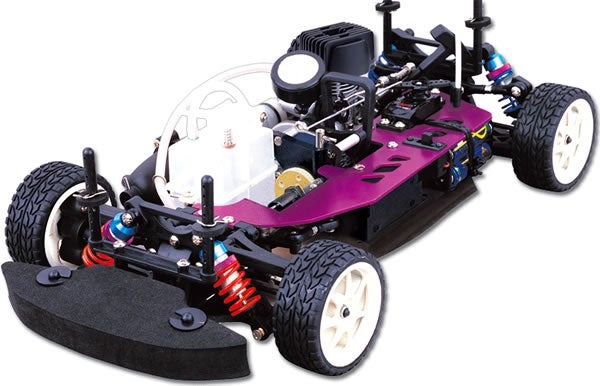For RC enthusiasts looking to push the boundaries of speed, power, and realism, nitro fuel is the ultimate choice. Unlike electric RC vehicles, nitro-powered models deliver a unique, authentic experience that mirrors the thrill of driving full-sized, fuel-powered machines. From the throaty roar of the engine to the adrenaline of high-speed runs, nitro fuel elevates the RC experience to new heights. This article explores how nitro fuel powers your RC journey and provides tips on harnessing its full potential.
What Makes Nitro Fuel Special?
Nitro is a specialized blend used in RC vehicles with combustion engines, composed of methanol, nitromethane, and lubricating oil. Each ingredient plays a critical role:
- Methanol: The primary fuel source, which provides energy for the combustion process.
- Nitromethane: Acts as a performance enhancer, increasing power output and enabling faster speeds.
- Lubricants (castor or synthetic oil): Protect the engine’s internal parts from wear and tear, even at high speeds and temperatures.
This unique blend is what gives nitro-powered RC vehicles their distinct roar, smooth acceleration, and a longer run time than many battery-powered counterparts.
The Power of Combustion: Why Nitro RC Feels Real
The beauty of nitro lies in its ability to mimic the mechanics of a full-scale car engine. Unlike electric motors, nitro engines are combustion-based, which means they operate similarly to small gasoline engines. Here’s how the combustion power of nitro fuel enhances the RC experience:
- Realistic Engine Sound: Nitro engines create an unmistakable roar, providing a visceral experience that brings your RC vehicle to life.
- Instantaneous Power Delivery: Nitro-powered engines deliver fast throttle response and high torque, making them ideal for high-speed racing or handling rough terrain.
- Extended Run Times: Nitro provides longer run times per refill, allowing for extended play sessions without the need for recharging.
Tips for Maximizing Your Nitro-Powered RC Experience
Getting the most out of your nitro RC vehicle involves a combination of tuning, maintenance, and a solid understanding of how the fuel impacts performance. Here’s how to unleash the full potential of nitro fuel:
1. Choose the Right Nitro Fuel Blend
Selecting the best nitro fuel blend for your needs is crucial. Different percentages of nitromethane impact how much power your engine generates:
- Low Nitromethane (10-15%): Suitable for beginners, as it offers more controlled power and less wear on the engine.
- Mid-Range Nitromethane (20-25%): Ideal for general use, offering a good balance between performance and durability.
- High Nitromethane (30% or more): Reserved for experienced users and competitive racers, as it delivers maximum power and speed but demands more frequent maintenance.
2. Tune Your Engine for Peak Performance
Fine-tuning your engine is essential for extracting maximum power from nitro fuel. There are two main adjustments:
- High-Speed Needle (HSN): Controls fuel flow at high RPMs, affecting top-end speed. Adjust this needle to balance fuel flow for the best speed and efficiency.
- Low-Speed Needle (LSN): Manages fuel flow at low RPMs, impacting acceleration and idle. A well-tuned LSN allows your vehicle to accelerate smoothly from a stop.
Start with factory settings and make small adjustments until you reach a setting that provides both speed and stability. This process might take time, but the payoff in performance is well worth it.
3. Optimize Glow Plug Selection
Glow plugs are essential to a nitro engine’s ignition process. Choosing the right type of glow plug can improve performance:
- Hot Glow Plugs: Recommended for low nitromethane blends and cold weather, providing faster ignition.
- Medium Glow Plugs: Versatile and suitable for mid-range nitro blends (20-25%).
- Cold Glow Plugs: Best for high-nitro blends and warm weather conditions, supporting stable combustion at high speeds.
Check your glow plug regularly and replace it if you notice any issues with starting or performance.
4. Store Nitro Fuel Properly
Nitro is sensitive to moisture and temperature changes, so proper storage is essential. Here’s how to keep it fresh:
- Seal the Container Tightly: Exposure to moisture degrades fuel quality, so always store nitro fuel in an airtight container.
- Store in a Cool, Dark Place: Keep nitro fuel away from direct sunlight and extreme temperatures, as they can alter the fuel’s chemical composition.
- Use a Dedicated Fuel Canister: Choose a container designed specifically for nitro fuel to ensure safety and longevity.
5. Monitor and Manage Engine Temperature
To get peak performance from a nitro engine, it’s crucial to maintain optimal engine temperature, usually around 200–230°F (93–110°C). Here’s how:
- Use an Infrared Thermometer: Regularly check your engine temperature during use.
- Tune the HSN: If your engine is running too hot, try slightly enriching the fuel mixture (turn the HSN counterclockwise) to reduce heat buildup.
Maintaining optimal temperature ensures consistent performance and prolongs the life of your engine.
Advantages of Nitro Fuel in Different RC Applications
One of the most appealing aspects of nitro is its versatility, making it suitable for various RC applications. Here’s how nitro fuel enhances different RC vehicle types:
- RC Cars: Nitro-powered RC cars are known for their speed and acceleration. The instant throttle response is ideal for racing on both smooth and rugged terrain.
- RC Boats: For water enthusiasts, nitro fuel provides powerful, long-lasting performance, allowing for extended runs on the water without recharging.
- RC Planes: Nitro-powered planes benefit from the increased power and extended flight times, making them ideal for aerobatics and extended air-time.
Troubleshooting Common Nitro Fuel Issues
As powerful as nitro engines are, they can sometimes experience performance issues. Here are some common problems and solutions:
- Engine Stalling: If your engine stalls, the HSN might be set too rich or the LSN too lean. Adjust the fuel mixture to find a smoother idle.
- Hard Starting: Difficulty starting often results from an old or damaged glow plug. Replace the glow plug if it appears worn or fails to glow properly.
- Overheating: If your engine is overheating, try enriching the HSN or giving the engine time to cool between runs.
Nitro Fuel Safety Tips
Nitro, while exhilarating to use, requires safe handling practices. Here are some safety tips to keep in mind:
- Handle with Care: Nitro fuel is flammable, so avoid smoking or open flames when handling it.
- Ventilate the Area: Always use nitro fuel in a well-ventilated space to avoid inhaling fumes.
- Dispose Responsibly: Dispose of any leftover or old nitro fuel in accordance with local environmental regulations.
The Nitro Experience: More Than Just Speed
Beyond raw power and performance, nitro fuel offers an immersive experience that engages the senses. The roar of the engine, the aroma of burning fuel, and the feeling of handling a combustion-powered machine make nitro RC vehicles a thrill to drive. For many enthusiasts, the challenge of fine-tuning, fueling, and maintaining a nitro engine adds to the satisfaction, creating a connection with their RC vehicle that goes beyond what battery-powered models can offer.
Final Thoughts
Nitro has the power to transform your custom RC cars experience, delivering an intensity and realism that few alternatives can match. By choosing the right fuel blend, maintaining your engine, and following these performance-boosting tips, you can unlock the full potential of nitro power and enjoy an exhilarating RC experience that will keep you coming back for more. Whether you’re a competitive racer or a weekend hobbyist, nitro fuel is sure to take your RC journey to the next level.

